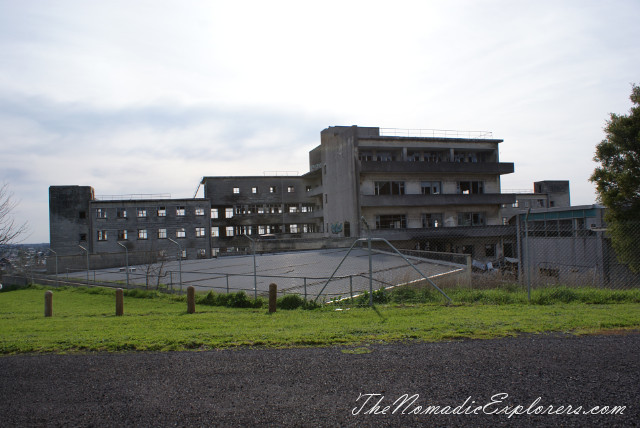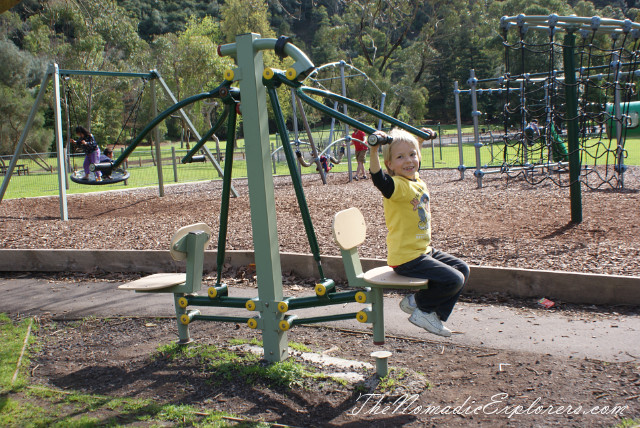We have arrived to Mt Gambier, South Australia, hurray! It is 4th state/territory in Australia that we've visited (we've already been in New South Wales, Australian Capital Territory and Victoria). Mount Gambier's location equal distance from Adelaide and Melbourne makes it an ideal stopover for travellers going to and from Kangaroo Island, the Great Ocean Road and the Grampians. It is also a perfect destination for longer stays to enjoy the natural and cultural beauty of the surrounding region, the caves and sinkholes, coastline, rivers, lakes and wineries.
We came here to lear more about some of the Kanawinka Geo Park attractions: Blue Lake, Lake Valley, Mount Gambier and Mt Schank.
The peak of the inactive volcano, the first place in South Australia named by European explorers, was sighted in 1800 by Lieutenant James Grant from the survey brig, HMS Lady Nelson, and named for Lord James Gambier, Admiral of the Fleet. The peak is marked by Centenary Tower, built in 1904 to commemorate the first sighting, and at 192 metres above sea level the landmark is the city's highest point. Another visible from the sea peak (Mount Schank) was named after Admiral John Schank, designer of Grant's ship, the HMS Lady Nelson.
Mount Gambier is set on an extinct volcano - the area boasts a fascinating network of volcanic craters above sea level and limestone caves beneath. The original settlement was known as Gambier Town. Today Mount Gambier is at the centre of the largest softwood pine plantation in the Commonwealth and is surrounded by farming, viticulture and dairy country.
The lakes formed in the craters of the extinct volcano have become an important recreational area for locals and visitors alike. The most spectacular is Blue Lake, so-called because the water's dull, blue-grey winter colour changes to a vibrant blue each November and stays that until March the following year.
We spent whole day in September exploring Mount Gambier and areas around. The water of Blue Lake was not such 'blue' as it might be according to the tourists brochures, but I was more blue than grey when we were there.
The Blue Lake panorama (no photoshop at all!):

There were many theories about the famous colour change of the Lake. The exact cause of this phenomenon is still a matter of conjecture, but it is generally considered likely that it revolves around the warming of the surface layers of the lake during the summer months to around 20 degrees Celsius (70 °F), causing calcium carbonate to precipitate out of solution and enabling micro-crystallites of calcium carbonate to form. This results in scatter of the blue wavelengths of sunlight. During winter the lake becomes well mixed, and recent research indicates that during this phase of the colour cycle the lake is somewhat murkier due to the redistribution of tannins and calcium carbonate particles throughout the lake. Solar elevation has also been found to influence the perceived colour of the lake. The movement of planktonic life-forms within the lake during the seasons and during the day may additionally play a part in the colour change.
Image source courtesy: Impact of Stormwater Recharge on Blue Lake, Mount Gambier's Drinking Water Supply Vanderzalm
Anyway, the Blue Lake and the area around is beautiful all the time. There are many well-marked walks around lakes (Blue Lake and Valley Lake), so we went around to look at the lakes from different lookouts.
The lake in early September with the original pumping station in the foreground:
Lake Valley:
Lake Valley again. Light green area on the left is another crater. 100 years ago is was a lake as well, but in our days it is just a land covered by grass. Its name is Leg of Mutton Crater. Strait ahead - Mount Gambier (the mountain).
Mount Gambier and Centenary Tower on the top of it.
Blue Lake again. See small hill on the right? It is Mount Schank, we will go there a little bit later:
Blue Lake again. Yes, it IS blue, no color correction at all:
We took a walk to the Centenary Tower, as it was promised that we will get the most scenic and panoramic views of Mount Gambier, its surroundings and the coast. The beautiful Centenary Tower is a tower of 190 metres above the sea level. This tower was opened to the public in 1904. Centenary Tower also has an extensive display of various photographs of the Lakes area since 1904. The tower entry requires a small admission fee. When the tower is opened, there is a flag is flying. When we were there, the tower was closed (probably because it was Sunday).
Anyway, the views from the Mount Gambier are stunning!
Lake Valley and Blue Lake:
We went to have a lunch to the Valley Lakes Recreational Area. On our way to the playground we saw this unusual (for Australia) building:
All windows are broken:
There is a nice building next to that one:
According to Google, it was Mount Gambier & Districts Health Service. Probably, the old building is been demolished, but, again, I have never seen such buldings here in Australia.
Mt Gambier (town) view:
There is a PERFECT playground near Valley Lake with BBQs and tables. Perfect place to relax for a couple of hours!
After a while we went further, to Mount Schank crater........























